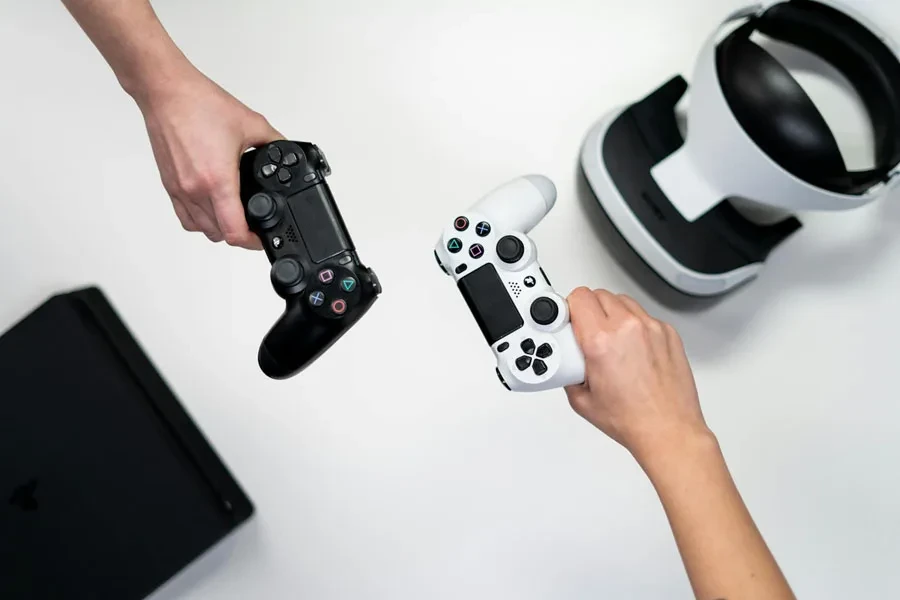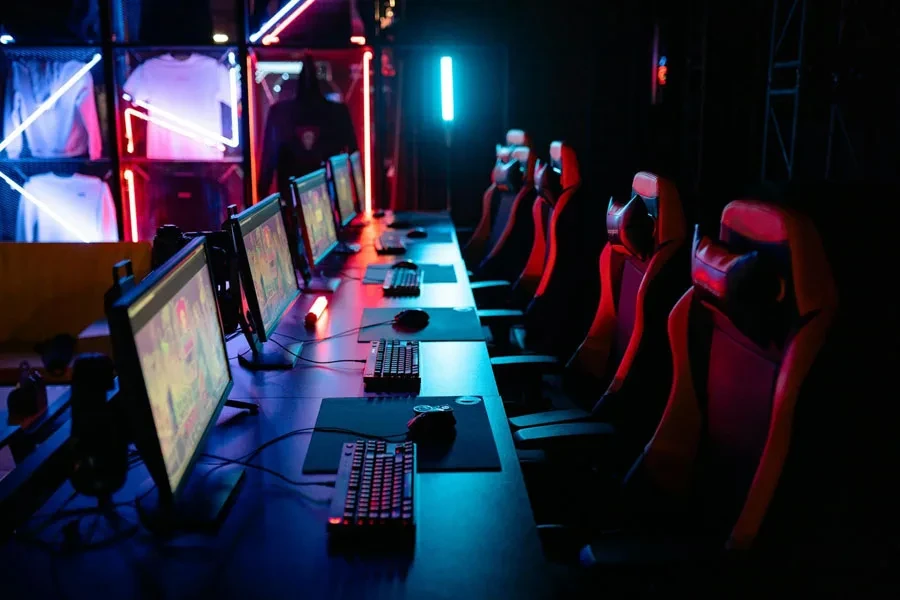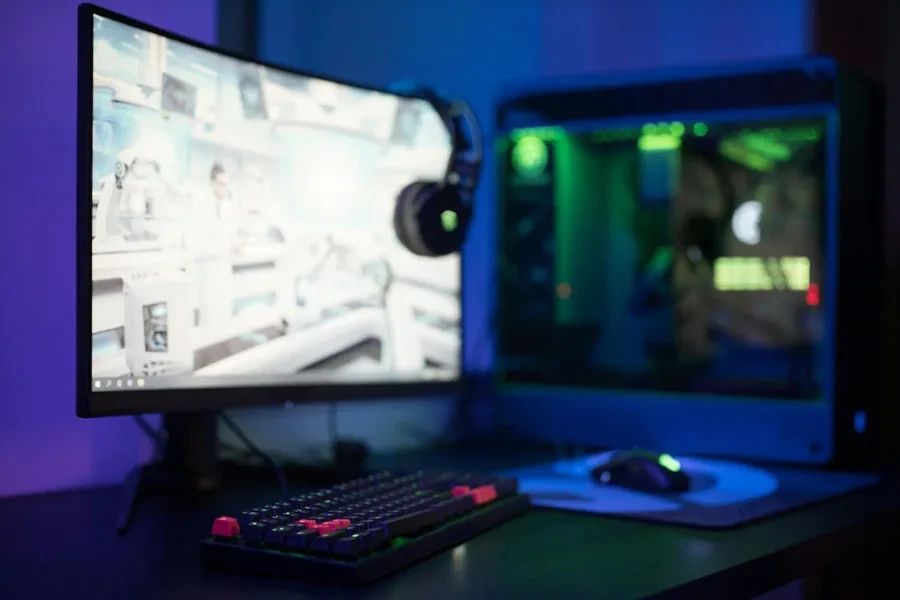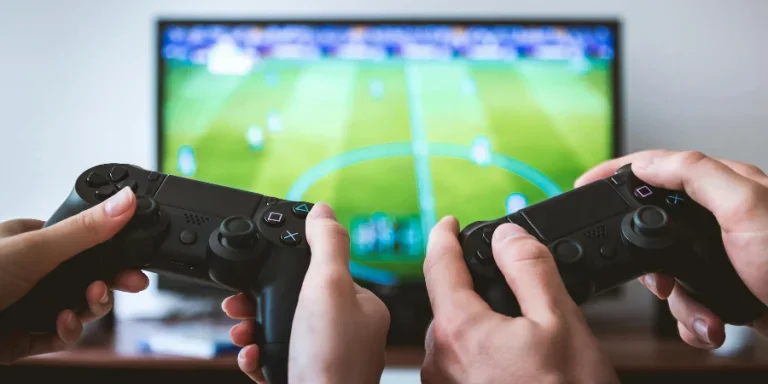Table of Contents
● Introduction
● Market overview
● Things to consider when selecting products
● Key accessories and feature considerations
● Conclusion
Introduction
In the rapidly evolving world of video gaming, the right gaming accessories have become indispensable for both casual enthusiasts and competitive players. Driven by relentless technological advancements and an ever-expanding gaming community, the market for gaming peripherals is witnessing unprecedented growth. Selecting the optimal accessories is not just about enhancing the gaming experience; it’s about unlocking new levels of performance and immersion. From ergonomic controllers to high-definition monitors, the quality and compatibility of a gaming gear can significantly impact success and enjoyment in the digital arena. This guide aims to navigate the vast landscape of gaming accessories, ensuring one makes informed decisions when buying gaming accessories.
Market overview
The gaming accessories market, a cornerstone of the digital entertainment industry, is on a remarkable trajectory of growth, mirroring the dynamism and expansion of the global gaming sector. As of 2021, the market was valued at $6.1 billion and is projected to soar to $14.4 billion by 2030, flourishing at a compound annual growth rate (CAGR) of 9.9%. This surge is underpinned by the proliferation of advanced gaming platforms and the escalating popularity of e-sports, which demand cutting-edge, good performance gaming peripherals. Major players in this arena, including tech giants and specialized gaming brands, are continuously innovating, driving forward the market with the introduction of accessories that promise to revolutionize the gaming experience.
Market trends

This period of rapid growth is characterized by several key trends that are shaping the future of gaming. The rise of e-sports, with its vast, global tournaments and leagues, has not only mainstreamed competitive gaming but also significantly elevated the demand for specialized gaming gear. Good performance headsets, precision controllers, and ultra-responsive keyboards are in greater demand than ever, as gamers seek every advantage in competitive play. Furthermore, the shift towards more immersive gaming experiences, supported by VR and AR technologies, is prompting a parallel evolution in gaming accessories, pushing the boundaries of what these products can offer. The industry is also witnessing a significant trend towards wireless and good fidelity devices, as gamers prioritize convenience without compromising on performance.
Future aspects
As the market continues to expand, the competitive landscape is becoming increasingly diverse, with companies vying to set new standards in innovation and quality. This competition not only drives technological advancement but also makes gaming accessories more accessible to a broader audience, ensuring that there’s something in the market to meet every gamer’s need and preference. The future of the gaming accessories market looks promising, with endless possibilities for growth and innovation, catering to an ever-growing community of gamers worldwide.
Things to consider when selecting products
Selecting the right gaming accessories is pivotal in defining the gaming experience, blending performance with the evolving needs of gamers.

Performance
In the realm of competitive gaming and e-sports, where reaction times are measured in milliseconds, the performance of gaming accessories can be the thin line between victory and defeat. For instance, gaming mice with adjustable DPI settings allow for precision aiming in FPS games, with high-end models offering up to 20,000 DPI for unmatched accuracy. Mechanical keyboards, preferred for their swift actuation and tactile feedback, often feature anti-ghosting capabilities, ensuring that every key press is registered even during the most intense moments of gameplay. As for headsets, those with Dolby Atmos or DTS:X support offer a competitive edge by providing spatial audio cues, crucial for detecting the direction of in-game sounds.
Durability and quality
Long gaming sessions necessitate accessories that are not only built to last but also maintain their performance over time. Good quality gaming keyboards, for example, use switches rated for tens of millions of keystrokes, ensuring longevity and consistent performance. Similarly, gaming mice designed with good quality materials and reinforced cables resist wear and tear, essential for gamers who engage in prolonged gaming sessions. The build quality of headsets, characterized by materials such as memory foam ear cushions and flexible steel cores, also contributes to their durability and comfort during extended use.
Compatibility and connectivity
The evolving landscape of cross-platform gaming underscores the importance of compatibility. Accessories with broad compatibility across multiple systems, including PC, consoles, and even mobile devices, offer gamers flexibility and convenience. The debate between wired and wireless connectivity is also pivotal; while wired devices provide a virtually latency-free experience critical for competitive gaming, advancements in wireless technology, such as 2.4 GHz connections, have significantly reduced latency in wireless devices, offering freedom of movement without compromising performance.
Ergonomics and comfort

Ergonomics play a vital role in preventing discomfort and strain over long gaming sessions. Gaming chairs with adjustable lumbar support, reclining features, and customizable armrests are designed to support optimal posture and comfort. Similarly, ergonomic mice with contoured designs and adjustable weights reduce the risk of strain on the hand and wrist, while keyboards with wrist rests and adjustable angles promote a comfortable and natural typing position.
Price vs. value
The decision to invest in gaming accessories often comes down to balancing price with the expected value. While premium accessories come with higher price tags, they often offer features that significantly enhance gaming performance and comfort, such as customizable RGB lighting, programmable buttons, and superior sound quality in headsets. However, the market also offers mid-range and budget-friendly options that strike a balance between cost and performance, providing essential features without the premium price.
In navigating the complex landscape of gaming accessories, these considerations form the cornerstone of making informed decisions that enhance gaming sessions, proving that the right gear can elevate the gaming experience to unprecedented levels.
Key accessories and feature considerations
Delving into the crux of what makes gaming accessories indispensable, one finds that performance, innovation, and user feedback stand as the pillars guiding the selection of top-tier equipment. Each category of gaming accessory, be it headsets, keyboards and mice, gaming chairs, or monitors, harbors unique features that can significantly enhance the gaming experience.

Headsets
Headsets stand as the gateway to immersive audio experiences, where sound quality and noise cancellation are paramount. The market has witnessed a trend towards headsets offering 7.1 virtual surround sound for a multi-dimensional auditory landscape, enabling players to discern the direction of in-game sounds with stunning accuracy. Noise-cancelling features, crucial for maintaining focus in noisy environments, have become a standard among premium offerings. Comfort too plays a critical role, with memory foam ear cushions and adjustable headbands becoming ubiquitous among models designed for prolonged use. The choice between wireless and wired headsets often boils down to balancing convenience against the desire for uninterrupted, latency-free audio.
Keyboards and mice
Keyboards and Mice form the primary interface for PC gamers, where precision and responsiveness are the gold standard. Mechanical keyboards, favored for their tactile feedback and durability, often feature customizable backlighting, programmable keys, and n-key rollover for simultaneous keystrokes. Gaming mice, on the other hand, are evaluated based on their DPI (dots per inch) sensitivity, with high-end models offering adjustable DPI settings for precision control. Ergonomic design ensures comfort over long gaming sessions, with features like customizable weight systems and grip adjustments to accommodate various hand sizes and playing styles.
Gaming chairs
Gaming Chairs have transcended their traditional role, emerging as a centerpiece of gamer ergonomics. The emphasis on lumbar support, neck cushions, and adjustability ensures that gamers can maintain an optimal posture during marathon sessions. Materials play a significant role, with breathable fabrics and memory foam padding being preferred for their comfort and durability. The integration of features like built-in speakers, vibration feedback, and recline functionality speaks to the evolving relationship between gamers and their chairs, highlighting the trend towards a more integrated gaming environment.
Monitors

Monitors are the windows to the digital realms, where high refresh rates and low response times contribute to a fluid visual experience, minimizing motion blur and input lag. The advent of 4K resolution and HDR technology has raised the bar for visual fidelity, offering breathtaking clarity and color depth. The choice of panel technology—whether IPS for superior color accuracy and viewing angles or TN for faster response times—further tailors the display to the gamer’s preferences. Additionally, features like G-Sync and FreeSync have become pivotal in achieving smooth gameplay by eliminating screen tearing and stuttering, ensuring the monitor and graphics card work in harmony.
Conclusion
The landscape of gaming accessories is as diverse and dynamic as the gaming community itself, offering an array of choices to enhance, customize, and elevate the gaming experience. Through careful selection of headsets, keyboards, mice, chairs, and monitors, gamers can significantly improve their gameplay, comfort, and immersion in the digital realm. The key lies in understanding the importance of performance, durability, compatibility, ergonomics, and value—factors that guide the path to making informed decisions in the gaming accessory market.




